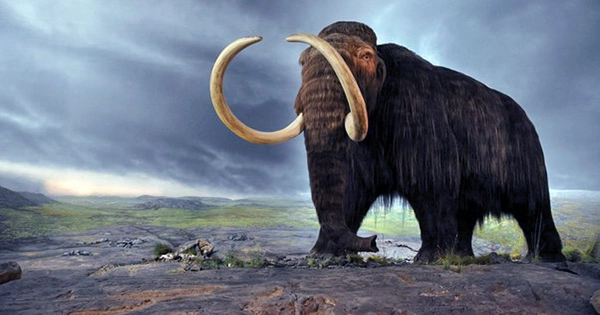When humans originated the phrase “all’s fair in love and battle,” they probably didn’t mean a tusk to the brain, but that’s exactly what one male mastodon got when battling during mating season. His demise, however, is a boon to academics, as the discovery of 13,200-year-old bones has revealed – for the first time ever – an extinct animal’s migrating pattern. “For the first time, we’ve been able to document the yearly overland migration of an individual from an extinct species,” said Joshua Miller, palaeoecologist at the University of Cincinnati and first author of new research published in Proceedings of the National Academy of Sciences.
Buesching, an 8-ton adult mastodon with battle scars, was discovered in 1998 on a peat farm outside Fort Wayne, Indiana, in the United States. It died after being pierced in the right side of its head by the tusk point of another mastodon, but the researchers behind the latest study don’t believe it perished on its own soil. Buesching’s banana-shaped tusk was chopped apart with a bandsaw to unearth signs that would guide them to this animal’s yearly migration activities.
Daniel Fisher, a palaeontologist and project co-leader at the University of Michigan, was able to take a thin, longitudinal slab from the core of the animal’s tusk for isotopic and life-history investigations. Mastodons were enormous herbivores that foraged on vegetation, and the chemical fingerprints of the foods they ate are recorded as isotopes within the animals’ tusks, not just as indicators of climate but also as isotopes inside the animals’ tusks. This research employed strontium and oxygen isotopes in tusk development layers to reconstruct Buesching’s travels and settings from childhood to old age.
They were able to rebuild the terrain the animal roamed during his 34-year life using novel modeling approaches and “a sophisticated geochemical toolset,” with the tusk fragment functioning as a journal of the shifting circumstances in which the mastodon lived. “In that time, you’ve got your whole life laid out in front of you,” Fisher said. “In the structure and composition of the tusk, the animal’s growth and development, as well as its history of shifting land usage and changing behavior, are all caught and documented.”
Buesching’s native territory appears to be in central Indiana, but he most likely went the 160 kilometers (100 miles) to northeast Indiana, where his bones were discovered, in search of a partner. Indeed, the tusk fragment demonstrated that Buesching’s habitat was similar to that of modern-day elephants until he reached maturity, at which time he was most likely kicked out of his female-led herd. Buesching began making annual excursions to northeast Indiana after some time roaming alone, according to the analysis, and did so at least three times before his death.
According to the experts, this location might have been his favourite summer mating grounds, similar to Spring Break. “We were able to demonstrate that enormous male mastodons like Buesching travelled to the breeding grounds every year,” Miller added. “Every time it became warm, the Buesching mastodon would go to the same spot—bam, bam, bam—again and over.” That signal’s clarity was unexpected and very exciting.”













